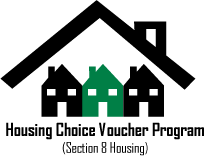% households with housing expenses reduced to less than 30% of income
Definition
Story Behind the Curve
A person is considered housing cost burdened when over 30% of their income is spent on housing. CMCA works with families to reduce their housing cost burden in several ways, depending on the family's unique circumstances. Families may reduce their housing expenses by lowering the amount they pay toward rent through the Housing Choice Voucher Program. They may utilize Weatherization Assistance to make their home more energy efficient and reduce overall energy costs. Or families may work with coaches through Head Start or BRIDGE to set and reach housing goals. Members may also work with coaches through SkillUP or the Financial Opportunity Center in order to get and keep higher paying jobs and learn financial management skills. These programs work together to impact the percentage of households with housing costs reduced to less than 30% of income.
Why Is This Important?
Affordable housing is a critical need in mid-Missouri. Several factors contribute to the housing crisis, including lack of affordable housing, lack of a living wage, and insufficient housing stock. CMCA supports families and communities by providing services that address each of these factors.
Lack of Affordable Housing
In CMCA's service area, nearly 22,400 (44.1%) renters and over 10,300 (18.2%) home owners with mortgages are housing cost burdened. A person is considered housing cost burdened when over 30% of their income is spent on housing. There are only 4,950 HUD-subsidized housing units available in CMCA's service area, which includes both public housing units and private rental properties that accept subsidy. Of these, 2,761 (56%) are units owned by landlords who accept Housing Choice Vouchers.
CMCA is authorized to distribute HCV vouchers to assist families in obtaining affordable housing. The number of vouchers CMCA can afford to distribute varies based on the value of the vouchers. CMCA is actively seeking new landlords willing to accept HCV subsidy payments in order to increase the number of housing units available to low-income individuals.
Lack of a Living Wage
The chart below highlights the gap between the average wage earned by renters and the housing wage (the wage required to afford a one, two, or three bedroom rental unit) for each of the counties in CMCA's service area. CMCA offers employment coaching services through SkillUP and the Financial Opportunity Center to assist people in gaining living wage employment.
Renter Wage vs. Housing Wage
| Wage | Audrain | Boone | Callaway | Cole | Cooper | Howard | Moniteau | Osage |
| Average Renter Wage | $12.90 | $12.14 | $13.15 | $12.97 | $10.94 | $8.28 | $9.58 | $9.91 |
| Housing Wage, 1 BR | $8.96 | $13.88 | $10.92 | $10.50 | $9.96 | $10.08 | $9.65 | $10.50 |
| Housing Wage, 2 BR | $12.98 | $16.81 | $14.38 | $13.04 | $13.13 | $13.29 | $12.73 | $13.04 |
| Housing Wage, 3 BR | $16.58 | $22.56 | $19.08 | $18.54 | $17.98 | $17.38 | $16.50 | $18.54 |
Insufficient Housing Stock
Communities simply do not have enough available housing stock to support families who choose to live there. CMCA's Housing Development Program builds new single family homes and multi-unit apartment complexes and rehabilitates existing properties to increase the available housing stock in our community. CMCA also offers low-income families a path to home ownership through USDA home loan packaging services.
Interested in helping families find affordable housing in your county? Consider supporting our efforts.
Sources:
1. U.S. Census Bureau. (2021). 2019: ACS 5-Year Estimates Data Profiles, Table DP04.
2. Housing & Urban Development, Office of Policy Development & Research. (2021). Assisted Housing: National & Local, 2020 estimates from 2010 Census.
3. National Low Income Housing Coalition. (2021). Out of Reach: 2021: Missouri.
How We Impact
CMCA members enrolled in the Head Start and BRIDGE programs receive one-on-one family coaching and comprehensive supports through the Whole Family Approach. Families who choose to set housing-related goals are supported in finding safe, affordable housing for their families.
Employment coaching is available for members enrolled in SkillUP and the Financial Opportunity Center (FOC). Both programs focus on helping individuals get and keep living wage jobs that may make housing more affordable. FOC participants also receive financial coaching and are connected to income supports, such as rental assistance, that may lower housing-related costs.
CMCA's Weatherization Assistance Program makes homes more energy efficient, reducing housing costs associated with utilities.
The Housing Choice Voucher Program helps to pay a subsidy amount towards the rent for low-income persons, so they can live in a house, condo, duplex, townhome, apartment, or mobile home of their choice. CMCA also offers USDA home loan packaging services to make home ownership affordable for low-income families.
Partners


CMCA partners with a variety of organizations to offer individual coaching and affordable housing services to low-income families including the Administration for Children and Families Office of Head Start and Office of Family Assistance Temporary Assistance for Needy Families Program, Columbia Public Schools, the Boone County Children's Services Fund, the Missouri Department of Social Services Family Support Division, the United States Department of Agriculture (USDA) Food and Nutrition Service, Rural LISC, the Missouri Department of Natural Resources Division of Energy, the United States Department of Agriculture Rural Development Department, the U.S. Department of Housing and Urban Development Housing Choice Voucher Program, and local landlords across the service area who accept Housing Choice Vouchers.
